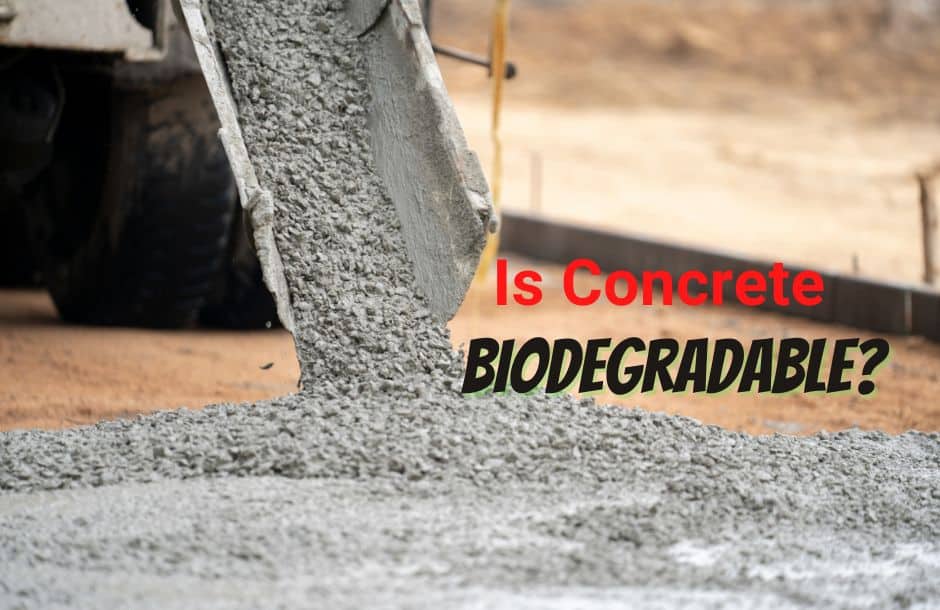Is concrete biodegradable?
Concrete is a type of construction material that is made from a mixture of cement, sand, and gravel. It is a durable and strong material that is often used for sidewalks, roads, and buildings. But is concrete biodegradable?
Concrete is not biodegradable, meaning it cannot be broken down by bacteria or other living organisms. However, it is possible to recycle concrete by crushing it and using it as aggregate in new concrete.
Concrete is not biodegradable
Concrete is not biodegradable. This means that it cannot be broken down by bacteria or other organisms. While this may seem like a good thing, it actually has some negative environmental impacts. Concrete is made from sand, gravel, and cement. These materials are all mined from the earth. This means that every time we use concrete, we are using up valuable resources. Additionally, the process of making cement produces a lot of carbon dioxide, which is a greenhouse gas. This means that concrete contributes to climate change.
Concrete is difficult to break down
Concrete is a material that is made up of cement, aggregates (such as sand or gravel), and water.
When concrete hardens, the hydrated cement paste undergoes a chemical reaction that causes it to become denser and stronger.
This makes concrete very difficult to break down. In fact, concrete is one of the most durable materials that we have at our disposal – it can easily last for hundreds of years.
The main reason why concrete is so difficult to break down is because of the cement that is used to make it. Cement is a powder that is made up of calcined limestone and clay.
When water is added to cement, it forms a paste that binds the other ingredients together.
The cement paste hardens and becomes very strong when it dries, and this is what gives concrete its high level of durability.
The process of breaking down concrete is slow
Concrete is a mixture of cement, water, sand, and gravel.
When concrete is first mixed, the cement and water form a paste that coats the sand and gravel.
As the concrete sets, the paste hardens and binds the sand and gravel together.
The strength of concrete comes from this chemical bond between the cement and water.
Concrete is not biodegradable, meaning it cannot be broken down by natural organisms.
The process of breaking down concrete is slow, and it can take centuries for concrete to degrade.
Concrete is a very strong building material, but it can take a long time to break down. If you need to break down a large concrete structure, there are a few ways to speed up the process.
One way is to use a jackhammer. Jackhammers are powerful tools that can quickly break through concrete. Another option is to use a demolition saw. This saw can cut through concrete much faster than a jackhammer.
If you don’t have a demolition saw or a jackhammer, you can still break down concrete by using a sledgehammer. This is a less efficient way to break down concrete, but it will still work.
Finally, you can also use explosives to break down concrete. This is the most efficient way to break down concrete, but it is also the most dangerous.
No matter which method you use, it is important to be careful when breaking down concrete. Make sure to wear protective gear, and be careful not to get injured.
Environmental Impacts of Concrete
Concrete is one of the most widely used materials in the world, and its environmental impacts are significant. The production of concrete releases greenhouse gases, contributes to air and water pollution, and requires a lot of energy.
Concrete is made from cement, aggregates, and water. The cement is made by heating limestone and clay until they form a powder. This powder is then combined with water and other chemicals to form a paste that is used to make concrete.
The production of cement is responsible for 5% of the world’s greenhouse gas emissions. It releases carbon dioxide, a greenhouse gas, when it is heated. The production of concrete also releases other greenhouse gases, such as nitrogen oxides and sulfur dioxide.
Concrete is also a source of water pollution. The production of cement and the mining of aggregates can release harmful chemicals into water bodies. These chemicals can contaminate water supplies and harm aquatic life.
Concrete also requires a lot of energy to produce. The heating of limestone and clay to make cement is very energy intensive. The mining and processing of aggregates can also be energy intensive.
All of these environmental impacts add up to make concrete a significant contributor to global climate change and water pollution. Reducing the use of concrete, or finding ways to make it more environmentally friendly, is an important challenge for the construction industry.
Concrete can be recycled
The recycling of concrete is a process that involves breaking down old concrete structures into smaller pieces and then using those pieces to create new ones. This process is not only good for the environment, but it can also be a cost-effective way to get the materials you need for your next project. There are a few different ways to recycle concrete, and each one has its own benefits.
Concrete is a construction material that is made from cement, aggregate such as sand or gravel, and water. It is a popular choice because it is strong and durable. However, when a structure is no longer needed, or when it is damaged, the concrete can be recycled and used in new construction projects.
There are many different ways to recycle concrete. One common method is to crush the concrete and use it as aggregate in new concrete projects. This can be done on a small or large scale. Another option is to use the concrete as a base material for roads, parking lots, or other paved surfaces.
Concrete can also be used to make new products such as pavers, bricks, and tiles. These products can be used for construction projects or for landscaping. Concrete can also be used to make countertops, flooring, and other building materials.
Recycling concrete is a sustainable way to use resources and helps to reduce the amount of concrete that is sent to landfills. It also saves money and energy, and helps to reduce greenhouse gas emissions.
key takeaways
Concrete is not biodegradable but can be recycled. By recycling concrete, we can reduce the amount of concrete that is produced, which will help to reduce the amount of CO2 that is released into the atmosphere. Recycling concrete also helps to conserve natural resources, such as sand and gravel, which are used to make concrete.

